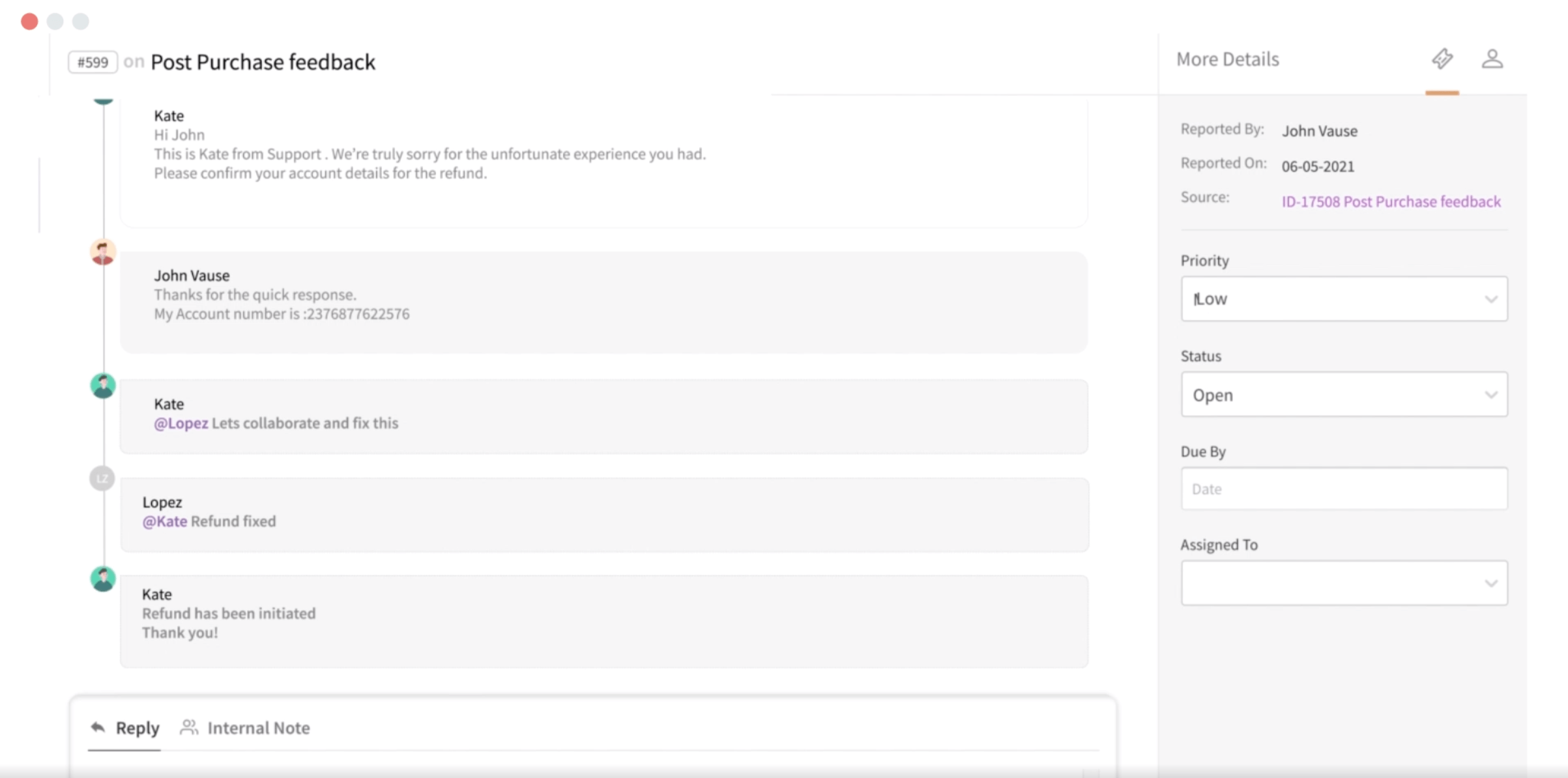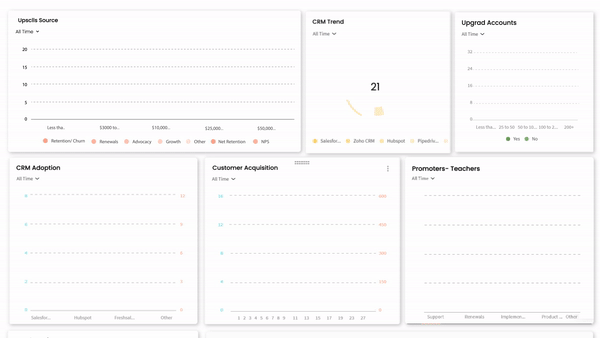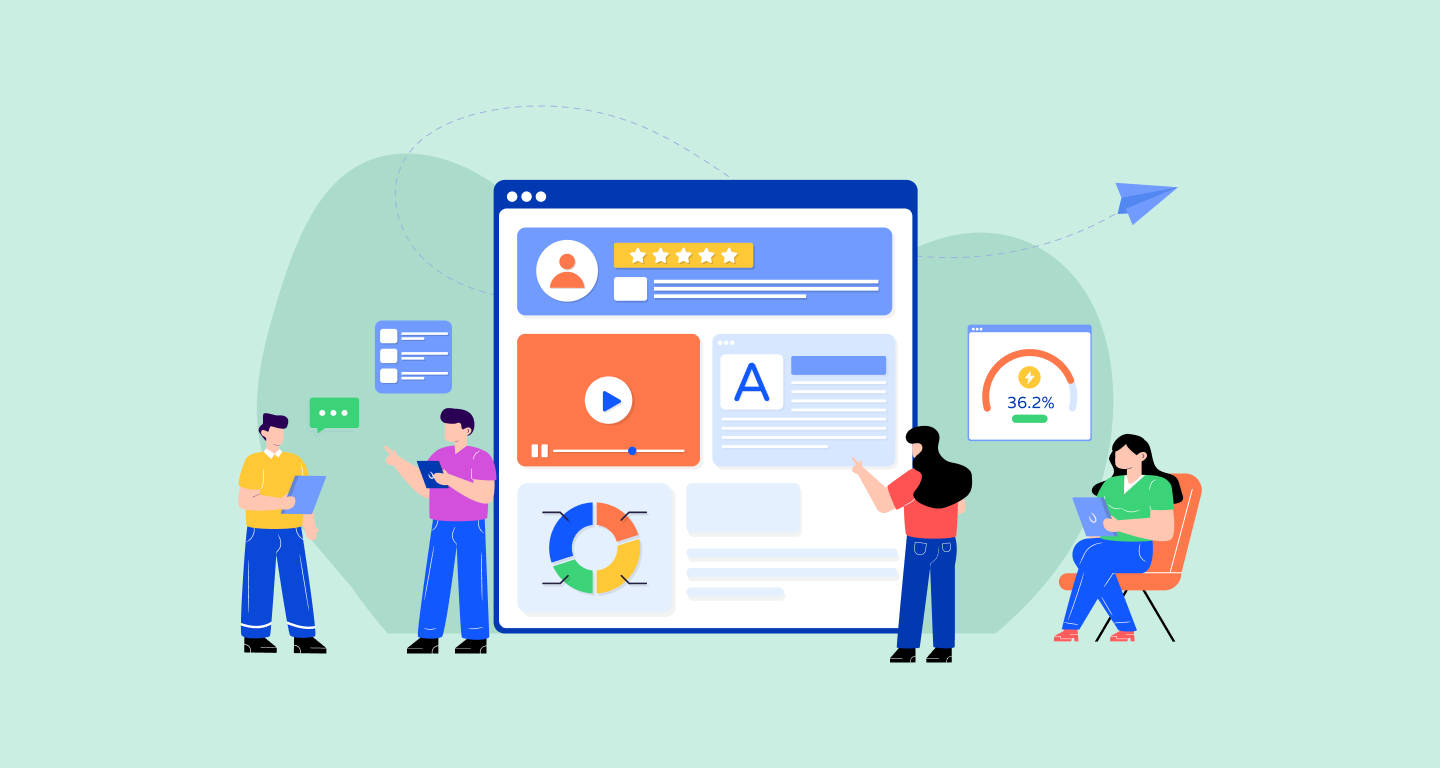Customer Experience
Conversational Support: Definition, Tips and Software Features
Article written by Parvathi Vijayamohan
Content marketer at SurveySparrow.
9 min read
19 September 2025

Research shows that 55% of businesses that use conversational support and marketing receive higher quality leads. Additional reports by Juniper Research endorse this, showing that voice and chat technologies are projected to bring in $290 billion in sales by 2025.
In other words, conversational customer support will be vital for your customer support transformation.
In this article, we’ll:
- What is conversational support?
- Discuss eleven tips for bringing conversational support to your business.
- Explain what conversational engagement software is and its essential features.
What is conversational support?
It’s the phrase used to describe a customer service strategy that relies on messaging apps and chatbots to communicate with customers.
Conversational support is different from traditional customer service in a few ways:
- First, it’s asynchronous, which means customers can send messages whenever they want and get a reply when an agent is available.
- Second, it uses chatbots to automate simple tasks, like answering common questions.
- Finally, it relies heavily on artificial intelligence (AI) to personalize each conversation.
11 Conversational Support Tips to Transform Your Current Customer Service
1. Invest in omnichannel support
One of the indispensable elements of conversational support is omnichannel messaging.
This means that customers should be able to reach your company through various channels, including SMS, email, social media, chatbots, and live chat. By offering multiple channels, you’ll make it easy for customers to get in touch with you however they want.
That said, what are the differences between omnichannel and multichannel support? Let’s find out.


2. Leverage chatbots
Chatbots can be a powerful tool for conversational support. They can automate routine tasks, like answering common questions or routing customers to the right person.
Chatbots can also help you qualify leads and gather customer information. When used correctly, chatbots can free up your team’s time so they can focus on more complex tasks.
74% of customers would rather use a chatbot to answer simple questions.
3. Automate replies
Another way to use chatbots is to automate replies to common questions. This can be helpful if you find that you’re answering the same questions over and over again.
By automating these replies, you’ll be able to provide a quicker response time, keep ticket backlogs to a minimum, and enable self-service on the part of the customer.
4. Use filters to qualify the customers and prospects
Using chatbots, you can also use filters to qualify the customers and prospects. For example, you can set up a filter to only allow chats from people who live in your country or have made a purchase within the last six months. By using filters, you’ll be able to focus on the most qualified leads.
Take, for example, our work with The PowerMBA, a startup that offers online MBA programs with the collaboration of top entrepreneurs like the founders of Netflix, YouTube, and Spotify.
Using SurveySparrow, ThePowerMBA has seen a 15% spike in lead captures and saved around 300 engineering hours.
5. Personalize each engagement
Conversational support software like SurveySparrow gives you access to customer records and chat history. This data can help personalize messages and each follow-up because it includes information like the customer’s name, location, purchase history, and more.
By personalizing each message, you’ll be able to build deeper relationships with your customers. What’s more, chatbots and chat message templates (like the one below) can help you deliver fast, personal support without radically increasing your cost per customer interaction.
Customer Satisfaction Survey
Use This Template6. Use a mix of chatbot and human support
While chatbots can help automate rote tasks, it’s important to use a mix of chatbots and human support. In this hybrid mode, chatbots handle high volume-low value requests, while human agents handle escalation requests.
With this, you’ll be able to provide your customers with 24/7 support and the best possible experience. In addition, it is possible to establish a smooth escalation process by using omnichannel support software as they come equipped with ticketing features.

7. Reduce wait times with automation
Sometimes, solving a customer issue is not as straightforward as Customer -> Support. For example, depending on the nature of the query, other teams need to be looped in, like Sales, Insurance, Billing, etc.
Regardless of what’s happening backstage, the customer does not want to know that they are being dragged from Support to Sales or Billing to IT for an answer.
Conversational support simplifies this customer flow. With conversational software, you can immediately assign the customer to the relevant contact.
8. Combine conversational marketing with conversational support
If you’re using conversational support, you can also combine it with conversational marketing. For example, you can program chatbots to share targeted messages and personalized offers to customers based on specific triggers, like user replies.
By combining these two strategies, you’ll be able to increase customer engagement and set up potential sales funnels with half the effort.
9. Gamify common pain points
If you find that customers often wait for a long time to speak to someone, you can gamify the process. For example, you can use a chatbot to quiz customers while waiting or, like Google, a fun little game where they can score reward points.
Another technique can be offering customers reward points or special discounts for using self-service channels or help articles instead of live support. By gamifying the process, you’ll be able to keep customers engaged and reduce wait times.
10. Set up a customer dashboard
Conversational survey software comes with an all-important feature: dashboards. They help you visualize data, but how do you use them?
As we had explained above, conversational support is a treasure trove of information. This data helps you:
- See how your customer experience is performing and identify any areas that need improvement.
- Obtain and use the relevant data to prioritize and segment audiences for further communication.
- Track website visitors’ behavior with integrations.
- Categorize the audience according to pre-defined variables like:
- Location
- Language
- IP address
- Sentiment
- Ratings
- Answer choices
- Answer scores and more
Dashboards make this data easy to understand and track. They can also help you present this data to team members without ever touching a spreadsheet.

11. Use customer sentiment analysis
Customer sentiment analysis can be a helpful way to improve conversational support. This analysis can help you understand how customers feel about your company and your products.
By understanding customer sentiment, you’ll be able to make changes to improve the customer experience.
What is conversational engagement software?
Conversational engagement software or support software is a type of software that helps you deliver a smooth customer journey by serving as a unified platform for customer experience. They come with the following features:
- Omnichannel messaging: From native apps to SMS services and social media platforms, these tools make it easy for businesses to manage customer communications.
- Single source of truth: Customer engagement software centralizes all of your customer conversations in a single hub. That way, you and your team can receive and respond to messages in one place instead of losing time by switching between channels.
- Efficiency tools: Like templates that help you save time on scripting questions. Or workflows to automate repetitive tasks so you can spend more time making personal connections. Moreover, hundreds of integrations help you create a seamless data ecosystem so you can get the big picture.
- Feedback management: Like tickets or cases, you can assign them to relevant team members for pain-free resolution.
Wrapping Up
In this article, we’ve covered the definition of conversational support, along with tips to implement conversational support for your business. Moreover, we’ve also listed the features you need to look for when investing in a conversational support software.
Need some more pointers on how to set up conversational support for your business? Then check out:

Make your customers feel heard. Turn feedback into loyalty with SurveySparrow's CX platform.
Parvathi Vijayamohan
Parvathi is a sociologist turned marketer. After 6 years as a copywriter, she pivoted to B2B, diving into growth marketing for SaaS. Now she uses content and conversion optimization to fuel growth - focusing on CX, reputation management and feedback methodology for businesses.
Related Articles

Customer Experience
Keeping Your Brand Human: 7 'Old-School' Strategies to Make Your Customer Experience Top-Notch
7 MINUTES
20 April 2019

Customer Experience
Customer Experience Research: Tools, Methods, and Tips for 2024
12 MINUTES
24 July 2023

Customer Experience
10 Excellent Ways AI Will Improve Customer Experience in 2025
15 MINUTES
31 July 2023

Customer Experience
What Is Customer Service? How To Use It to Improve Customer Satisfaction?
17 MINUTES
5 April 2021
